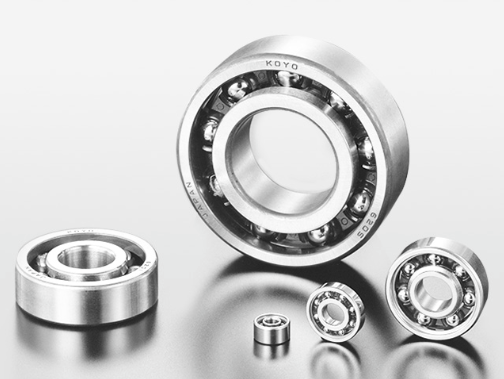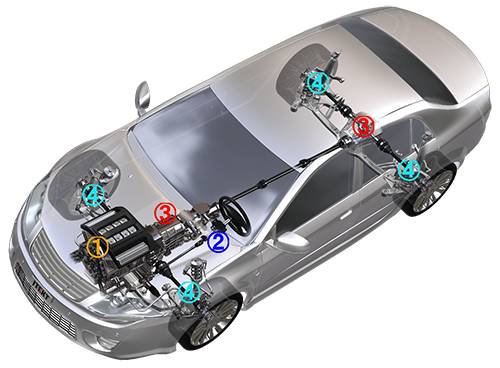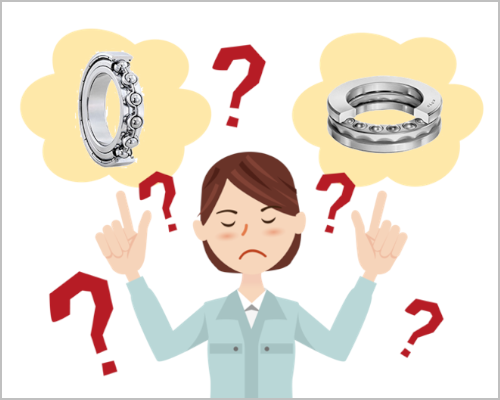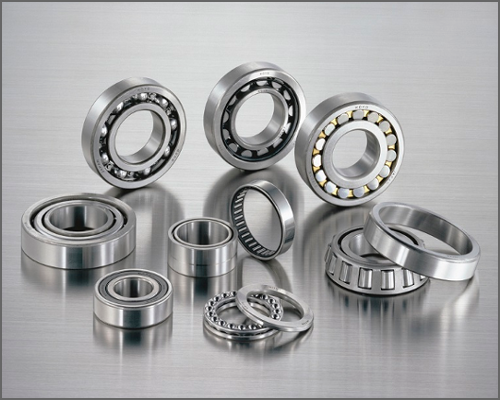Bearing Trivia
What Are Bearings? Let's learn about the basic functions of bearings!
- #1 What Are Bearings?
"Bearings" are a type of mechanical part, but do you know what they do? They are, in fact, so fundamental to the machine industry that they have been called the industry's "bread and butter". They are used in all sorts of machines, but because they do their work in the shadows, most people who aren't involved in the machine industry probably hear the word and think "What's that?"
So for this, the inaugural "Bearing Column", we are going to explain the absolute basics of bearings, and provide a brief explanation of the functions they serve.

1. So just what are bearings?
Bearings are "parts that assist objects' rotation". They support the shaft that rotates inside the machinery.
Machines that use bearings include automobiles, airplanes, electric generators and so on. They are even used in household appliances that we all use every day, such as refrigerators, vacuum cleaners and air-conditioners.
Bearings support the rotating shafts of the wheels, gears, turbines, rotors, etc. in those machines, allowing them to rotate more smoothly.
In this way, all sorts of machines require a great many shafts for rotation, which means bearings are almost always used, to the point where they have become known as "the bread and butter of the machine industry". At first glance, bearings may seem like simple mechanical parts, but we could not survive without bearings.
2. The role of bearings: So why are they so important?
So, just what kind of role do bearings play in allowing machines to operate smoothly?
They fulfill the following two major functions.
Function 1: Reduce friction and make rotation more smooth
Friction is bound to occur between the rotating shaft and the part that supports the rotation. Bearings are used between these two components.
The bearings serve to reduce friction and allow for smoother rotation. This cuts down on the amount of energy consumption. This is the single most important function of bearings.
Function 2: Protect the part that supports the rotation, and maintain the correct position for the rotating shaft
A large amount of force is needed between the rotating shaft and the part that supports the rotation. Bearings perform the function of preventing damage from being done by this force to the part that supports the rotation, and also of maintaining the correct position of the rotating shaft.
This function of bearings is what allows us to use our machines over and over again for an extended period of time.
3. Just how widely are bearings used? What would we do without them?
Let's ask ourselves just how much our daily lives are dependent on bearings. You don't normally see them so it's a bit difficult to imagine, right? Let's talk a bit about cars, since those are something we all know.
When you were a child, you probably played with an electric toy race car set at least once, right? You might remember that the bearings where the wheels were attached.
But what about real cars? Just how many bearings does a single car require?

Fig.: The main places in which bearings are used in a car
① Equipment (parts) for generating driving force
Examples: Alternators, turbochargers and the like
② Equipment (parts) for steering
Examples: Steering gears, pumps and the like
③ Equipment (parts) for transmitting driving force
Examples: Transmissions, differential gears and the like
④ Equipment (parts) for driving the car
Examples: Wheels, suspension and the like
Please click the link below for more detailed information on bearings for use in cars:
Industrial Field: Automotive page
......The correct answer is about 100!
For high-end cars, the number of bearings is more like 150!
All of these bearings play a very important role.
If a car did not have bearings,
- rotation would become rough and consume a large amount of energy, and
- the part that supports the rotation would break down almost immediately.
For this reason, we would be unable to drive cars safely and comfortably without bearings.
In this way bearings are constantly working in the shadows to make our lives more comfortable.
Conclusion: Bearings are the mechanical parts that make the world go round
Bearings play a crucial role in our daily lives, but it is precisely because of their importance that we must constantly strive to make them more precise and durable.
Additionally, it is vital to the development of machine technology that we continue going forward to develop bearings that can work under ever harsher and more specialized conditions.
Bearings will no doubt continue to evolve and change, and to improve our livelihoods by "making the world go round".










